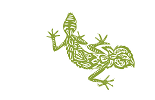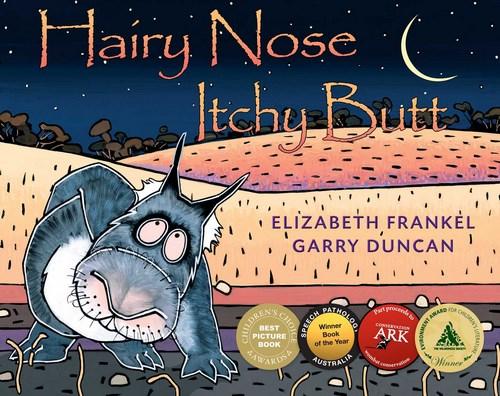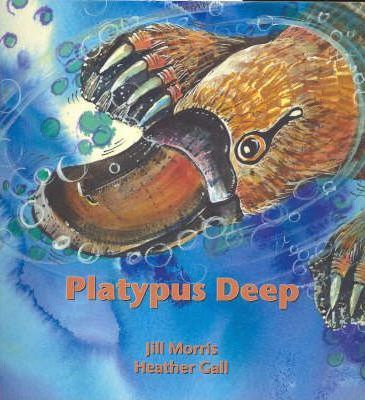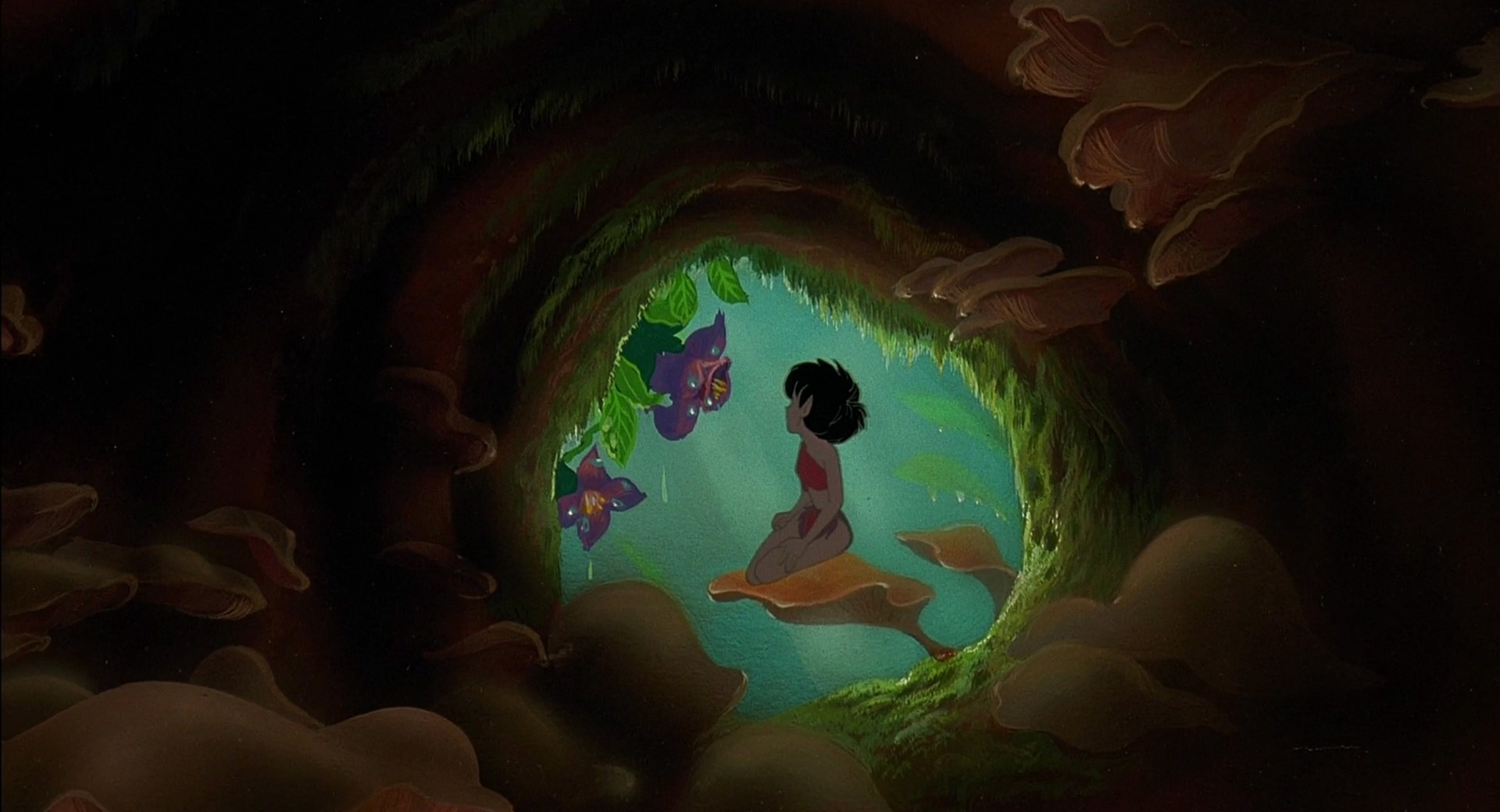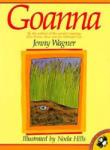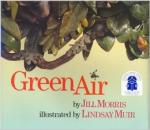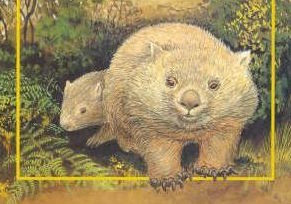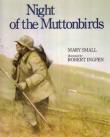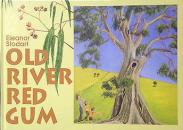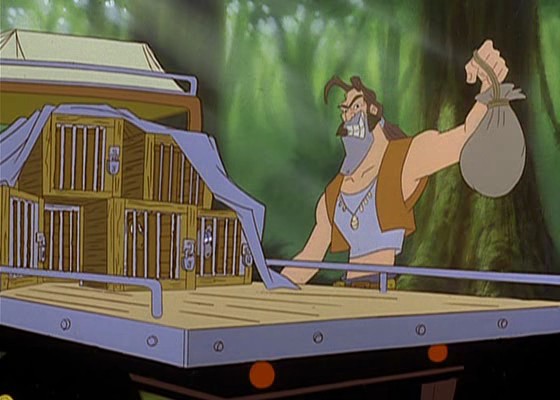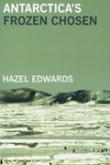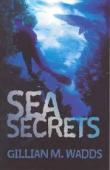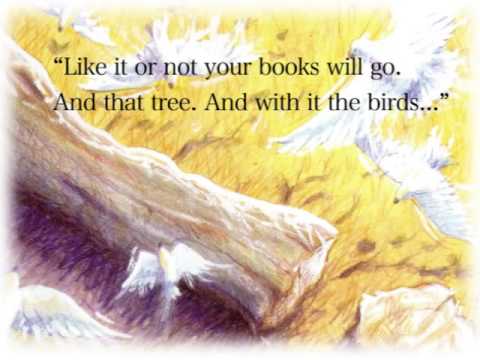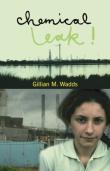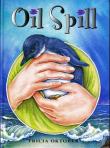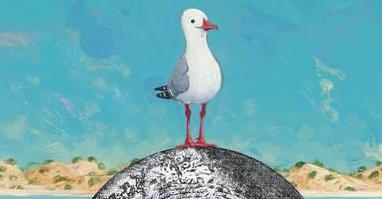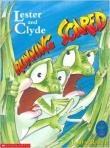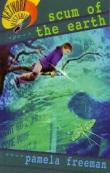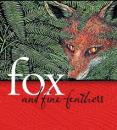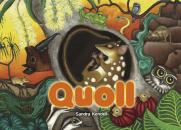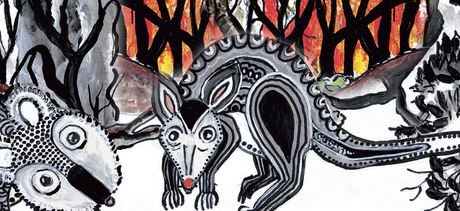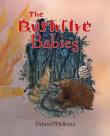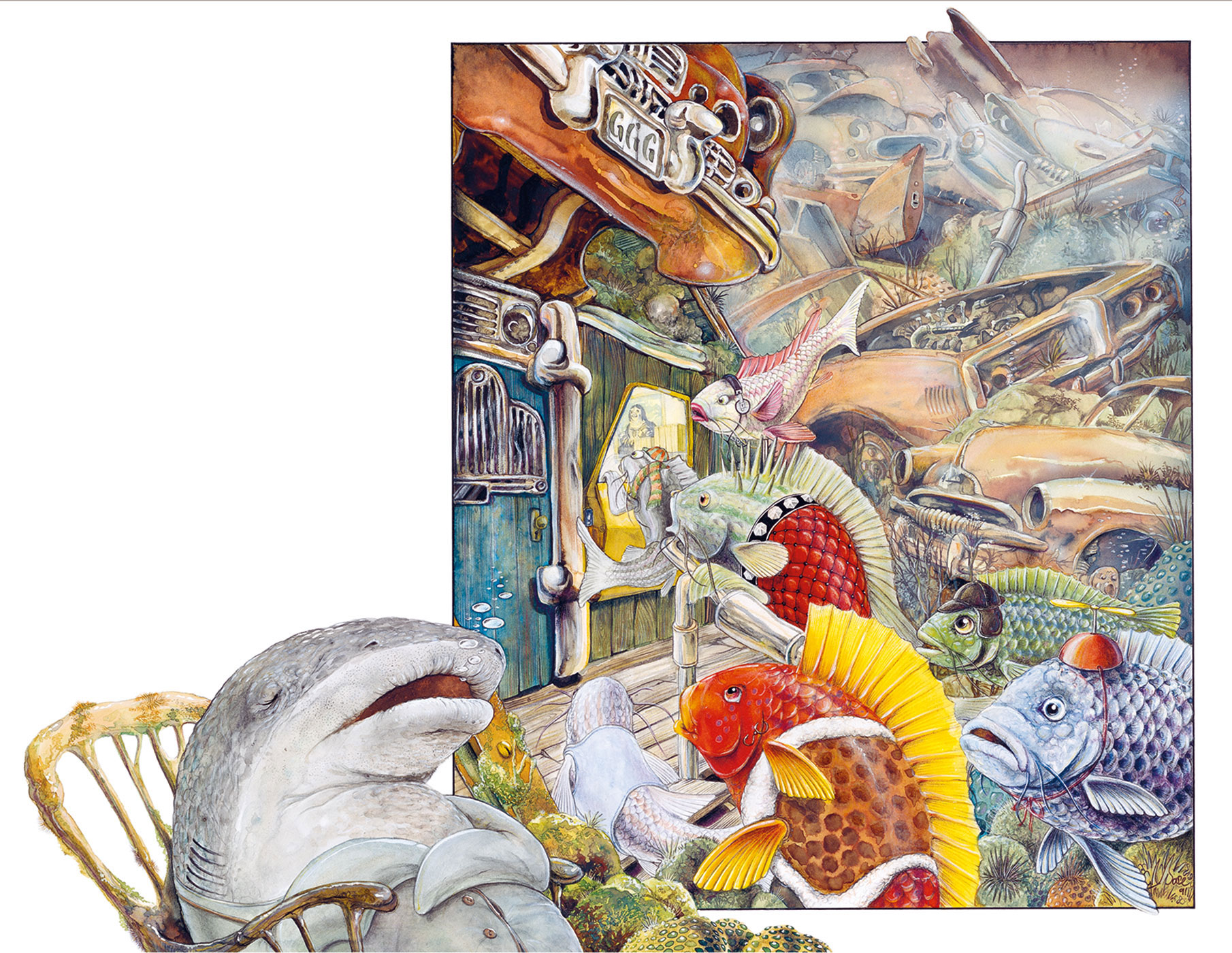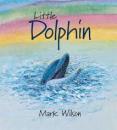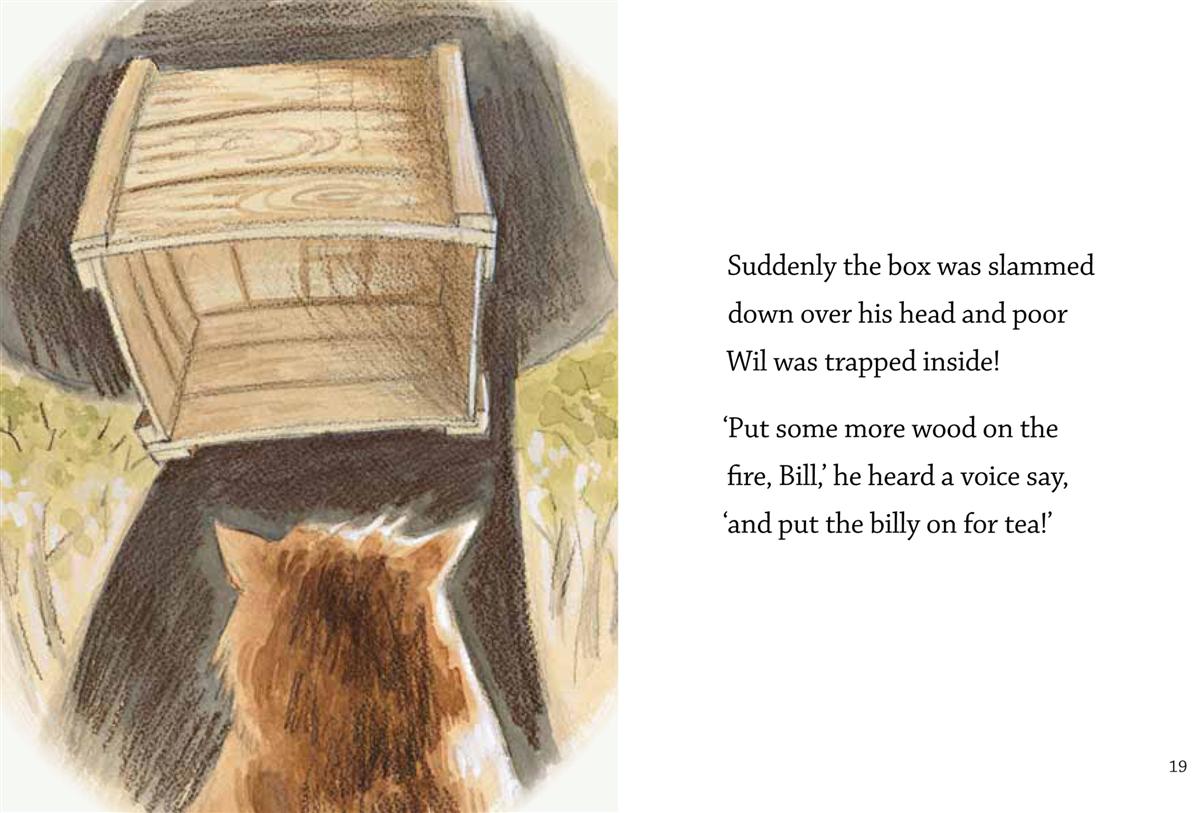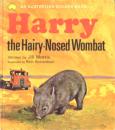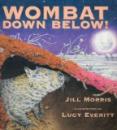AustLit
Researched, compiled and written by Amy Cross
- An Overview
- A Brief History Part I: Settlement to Post-War (Forthcoming) In Progress
-
A Brief History Part II: 1970s to Present Day (Under Development)
In Progress
- A Brief History of the Environment in Children's Literature, Part II: 1970s to Present Day
- 1970s and 1980s: Conservation at the Forefront
- Conservationism: An Environmental, Political and Social Movement
- The 1990s
- A New Millenium
- Contemporary Contexts: Politics, Culture and Literary Criticism
- — Ecocriticism and "Environmental" Literature
- — Postmodernism, Globalisation and Urban Landscapes
- — The Anthropocene
- Contemporary Concerns, Forms and Genres
- — Sustainability
- — The Future
- Fact, Fiction and Genre Mixing
- Explore Further
- Aboriginal Stories and the Environment
- Landscapes and Settings
- Biodiversity and Threatened Species
- Caring for the Environment
- Sustainability
- Built Environments
- Environmental Degradation
- Disasters, Climate Change and Global Warming
- Poetry, Film and Other Narrative Forms
- Education and the Australian Curriculum
- Authors, Illustrators and Publishers
- Award-winning Environmental Literature
-
Bibliography
- List of Works Cited
- Primary Sources - Fiction
- — Picture Books
- — Children's Fiction
- — Young Adult Fiction
- Primary Sources - Other Formats
- — Drama and Musicals
- — Film and Television
- — Mixed Anthologies and Prose
- — Poems and Poetry
- Primary Sources - Non-fiction
- — Autobiographies and Biographies
- — Information Books and Non-fiction
- Secondary Sources
- Project Team and Acknowledgments
-
Human impact on the environment is a pervasive theme in most literature about the environment. In young adult literature, particularly dystopian or post-apocalyptic genres, the fallout of an ecocatastrophe is often a prelude to the novel. In children's fiction or films, a localised environmentally destructive issue is often the plot of the story, and it is the role of protagonist to stop the destruction, or to save the animals, in turn becoming environmentally aware, or an ecocitizen. Picture books cover all kinds of negative human impact on the environment both implicitly and explicitly, as illustrations allow for a multi-layed examination of the issues. It is common for Author's notes or endpapers to call readers to action to stop environmental destruction and live more sustainably, with conservation of resources and the environment in mind.
-
In Hairy Nose, Itchy Butt, a hairy-nosed wombat wakes to find his favourite scratch tree has gone. The land has been cleared, there are no trees left; animals have lost their homes, birds' nests have fallen down and eggs cracked. As the wombat tries to find his next best scratching post, each double paged spread shows another obstacle and other destructions that human have made of his habitat: farming and sheep grazing; camping and littering; urban development; crop growing; until finally returning home to find his burrow is also gone. He encounters another homeless wombat and together they make the dangerous trek across a highway filled with speeding trucks, to join the other native animals heading into 'Utopia Conservation Park'. The illustrator uses various shades of brown and grey to show a desolate landscape against the backdrop of night. While the story has a happy ending - the animals have found a safe home built for them by humans - in the end it appears to be up to the animals to find this place themselves and their ability to read.
-
Platypus Deep is the story of Orni, who fearing the declining levels of water in his habitat, heads upstream searching for a deeper pool. Along the way he encounters other animals essential to the biodiversity of river life, as well as dangerous animals, storms and flooding, and pollution. Orni discovers the "the world downstream is harsh and cruel. There is nowhere to walk on the bank, FLIP-FLOP with flippers folded back. Orni searches for a place to dig a den - among pipe and brick, metal and concrete, and noise!" (Morris, p.[28]) The illustrations indicate dam equipment is responsible for this noisy, unsuitable environment. While Orni finds a safe place to live, he wonders where the waters go to downstream. He plans to visit one day but the illustrations show an urbanised environment - there is nowhere for Orni to go. A statement by the author is included on the back cover: 'In 2005 the people of Maleny protested unsuccessfully against the building of a supermarket on the bank of Obi Obi Creek, the habitat of a large colony of platypuses.'
-
The Department of Environment and Energy identifies the main threats to Australia's biodiversity as: loss, fragmentation and degradation of habitat; the spread of invasive species; unsustainable use of natural resources; climate change; inappropriate fire regimes; changes to the aquatic environment and water flows.
All of these issues are included below, except for climate change which is examined in the next section: Disasters, Climate Change and Global Warming.
See also Biodiversity and Threatened Species; and Built Environments for a look at the impact of urban development.
-
Explore the tiles below for examples narratives about environmental degradation.
Click here for a complete list of children's and young adult narratives about 'environmental destruction'. Try also keyword searches for terms like 'pollution' or 'deforestation'
-
-
(Display Format : Landscape)
Habitat Destruction
Habitat destruction can occur for a wide range of reasons including natural ones such as bushfires or extreme weather events. In narratives about the environment though, habitat destruction is usually the result of urban or corporate expansion and development, and land clearing. Pollution is also a common cause. Most of the tiles in this section impact animal habitats in some way.
N.B. Image above is from 'FernGully' (film), found online.
-
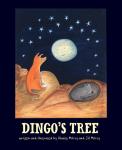 Courtesy of Magabala BooksMilroyDingosTreeCoverLarge_FV[[equals].jpg
Courtesy of Magabala BooksMilroyDingosTreeCoverLarge_FV[[equals].jpg Dingo's Tree Gladys Milroy , 2011 single work picture book
Dingo's Tree Gladys Milroy , 2011 single work picture bookAbstract: Dingo's Tree is a tale of friendship and sharing, it tells of the struggle to survive in a land that is devastated by mining. It is a powerful children's cautionary tale on the destruction and havoc that mining causes to land and to community.
This story is about the impact of the mining industry on natural habitats.
Dingo's Rain Tree, becomes a Tree of Tears as it issues a warning to the animals about their Country: 'It is what your Country will become,' said Tree of Tears. 'The mining is cutting too deep for the scars to heal. Once destroyed, mountains can't grow again and give birth to the rivers that they send to the sea. Trees are being ripped from the earth, and without trees there can be no rain tot fill the waterholes.' (Milroy, p.20)
-
 Screen cap from promotional trailerferngullyimage_C[hash]l,q.jpg
Screen cap from promotional trailerferngullyimage_C[hash]l,q.jpg FernGully : The Last Rainforest Diana D. Young , Jim Cox , 1992 single work film/TV
FernGully : The Last Rainforest Diana D. Young , Jim Cox , 1992 single work film/TVAbstract: FernGully is about the magical inhabitants of FernGully rainforest are under threat from logging and from Hexxus, an anthropomorphic polluting force.
-
Abstract: Goanna had guarded an old hollow log for a very long time. Then one morning bulldozers came crashing through the trees.
-
Abstract: Silus, the platypus frog, lives in the 'green' air of a small remnant rainforest in south-eastern Queensland, Australia. When heavy rain swells the creek where Silus lives, he is swept out of the forest and into the dangerous world of the 'yellow' air.
-
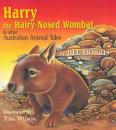 4860205448632749518.jpg
4860205448632749518.jpg Harry the Hairy-Nosed Wombat and Other Australian Animal Tales Jill Morris , 2003 selected work children's fiction
Harry the Hairy-Nosed Wombat and Other Australian Animal Tales Jill Morris , 2003 selected work children's fictionAbstract: Six well-loved stories about Australian animals, by celebrated children's author Jill Morris.
In each of the stories contained in this collection, animals are threatened by ignorant humans. Stories include: Harry the Hairy-Nosed Wombat, Rufus the Red Kangaroo, Bobuck the Mountain Possum, Kolo the Bush Koala, Percy the Peaceful Platypus, and Rusty the Nimble Numbat.
-
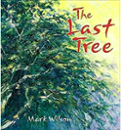 Image courtesy of publisher's website.1021806192487490281.jpg
Image courtesy of publisher's website.1021806192487490281.jpg
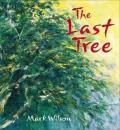 This image has been sourced from online.4973314640510101316.jpg
This image has been sourced from online.4973314640510101316.jpg The Last Tree Mark Wilson , 2007 single work picture book
The Last Tree Mark Wilson , 2007 single work picture bookAbstract: A beautiful old eucalyptus tree provides food and shelter for many forest dwellers, but what happens when the tree's habitat is threatened?
A beautifully illustrated text that demonstrates the impact of urban development on a tree's habitat.
-
First line: Some people think it's good to log.
Themes: tree logging, guilt, animal homes, relationships
-
First line: A trickle
Themes: human destruction of the Murray River, pollution, introduced species, despair
-
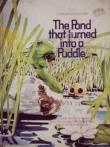 6263561639541356473.jpg
6263561639541356473.jpg The Pond That Turned into a Puddle Jeanette Morris , 1974 single work picture book
The Pond That Turned into a Puddle Jeanette Morris , 1974 single work picture bookAbstract: The story of the gradual demise of a healthy pond, which was home to fish, frog, duck and water lily, through human intervention.
-
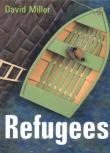 Image courtesy of publisher's website.6832649530659743847.jpg
Image courtesy of publisher's website.6832649530659743847.jpg Refugees David Miller , 2003 single work picture book
Refugees David Miller , 2003 single work picture bookAbstract: A small green swamp just past the edge of town is home to two wild blue-billed ducks. But one day huge, rumbling, grumbling machines crawled, scraping and gouging towards the swamp and out poured the swamp's precious water. Refugees tells the story of the duck's misadventures in trying to find a new place to live.
This story follows two wild ducks as they try to find new homes after the destruction of their swamp habitat. They encounter busy rivers, hunters, the sea, and a temporarily contained in a barred box before located to a new swamp. While it is primarily about human impact on wild animals, the title suggests it can also be read as a metaphor for the plight of refugees seeking a new home in Australia.
-
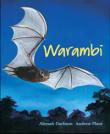 Image courtesy of publisher's website857859836173145176.jpg
Image courtesy of publisher's website857859836173145176.jpg Warambi Aleesah Darlison , 2011 single work picture book
Warambi Aleesah Darlison , 2011 single work picture bookAbstract: When the home of a little bent-wing bat colony is destroyed, Warambi becomes separated from her mother and the other bats. Lost and alone she finds shelter far away. Scary sounds are all around her. Danger is never far away. Will she find her way home?
A bulldozer destroys the Warambi's home and she is separated from her family. A human eventually finds her and relocates her to a safer area with other bats. The endpapers of this book contain detailed factual information about Little Bent-Wing Bats.
-
-
(Display Format : Landscape)
Hunting, Industry & Farming
These stories about instances where humans have consciously harmed animals, or knowingly destroyed habitats to protect their interests, such as crops and farms.
N.B. Image above from cover of 'Golden Wombats'.
-
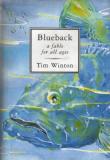 http://www.middlemiss.org via Wikipedia6832500928209177307.jpg
http://www.middlemiss.org via Wikipedia6832500928209177307.jpg
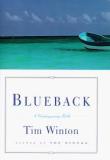 This image has been sourced from online.5135016684596874894.jpg
This image has been sourced from online.5135016684596874894.jpg
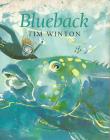 Cover image courtesy of publisher.8572328680138660233.jpg
Cover image courtesy of publisher.8572328680138660233.jpg
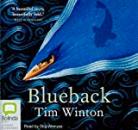 1341750636533158571.jpg
1341750636533158571.jpg
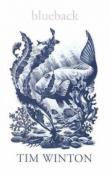 This image has been sourced from online.338960907174282487.jpeg
This image has been sourced from online.338960907174282487.jpeg
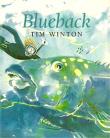 This image has been sourced from online.6963398351784450875.jpg
This image has been sourced from online.6963398351784450875.jpg
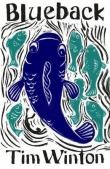 6009483022012875544.jpg
6009483022012875544.jpg
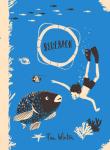 Image courtesy of publisher's website.2086233284177761133.jpg
Image courtesy of publisher's website.2086233284177761133.jpg
 This image has been sourced from Dymocks2433356817641111825.jpg
This image has been sourced from Dymocks2433356817641111825.jpg Blueback Tim Winton , 1997 single work children's fiction
Blueback Tim Winton , 1997 single work children's fictionAbstract: Abel Jackson loves to dive. He's a natural in the water. He can't remember a time when he couldn't use a mask and snorkel to glide down into the clear deep. Life is tough out at Longboat Bay. Every day the boy helps his mother earn their living from the sea and the land. It's hard work but Abel has the bush and the sky and the bay to himself. Until the day he meets Blueback, the fish that changes his life. An ecological novel on a boy who protects a fish from property developers and rapacious fishermen. The boy befriends the fish, a blue grouper while diving for abalone, his family's trade. Blueback is about people learning from nature.
A boy protects fish from the fishing industry and property developers. This book has also been adapted into a play.
-
 This image has been sourced from Goodreads.1325585048376707673.jpg
This image has been sourced from Goodreads.1325585048376707673.jpg
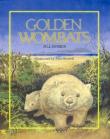 4782299268881930407.jpg
4782299268881930407.jpg Golden Wombats Jill Morris , 1990 single work picture book
Golden Wombats Jill Morris , 1990 single work picture bookAbstract: A story about a special family of wombats found on on Flinders Island in Bass Strait.
A mother wombat is shot and killed, leaving a joey to fend for itself.
The book contains a poem, wherein the shooter says 'I love our marsupials as much as the next man. / I only kill a few. / I try not to hit the females, / But... / Wombats destroy the pasture for my sheep. / Wombats knock down fences, dig holes, / ...'
-
Abstract: Every year Matthew goes with the other families of Cape Barren and kills muttonbirds for money. An encounter with a conservationist who has been banding the birds for years causes Matthew to question this practice.
-
Abstract: The beautiful spreading river red gum occurs along rivercourses throughout most of the Australian mainland. Like other eucalypts, it is a survivor in a land where floods follow droughts, and where the soils are low in nutrients. But when Europeans came they made drastic changes. They cleared away trees and altered the way rivers flowed. Through compelling verse and pastel illustrations this book tells the story of a particular river red gum and the changes it must have lived through.
This picture book/poem shows the devastating impact of farming on a single river red gum along the Wimmera River. The poem details how grass, introduced species, sheep, and land clearing has impact the environment. Throughout the illustrations, the trees gradually disappear leaving few standing. The final lines of the poem call for conservation and care for the land:
You silently ask
us all to hear a land misused
cry out in fear.
Oh, can we learn
once more that we,
in all we do,
must
'care for country'.
-
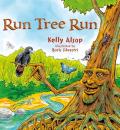 Image courtesy of publisher's website.4366034436000708453.jpg
Image courtesy of publisher's website.4366034436000708453.jpg Run Tree Run Kelly Alsop , 2014 single work picture book
Run Tree Run Kelly Alsop , 2014 single work picture bookAbstract: Written as a protest against a proposed $1.2 billion bauxsite mine near the Steve Irwin Wildlife Reserve at the Cape York Peninsula, this chidren’s book has eighteen vibrant illustrations of the rainforest and its animals. A gentle, wise and old tree encourages a Sugar Glider to look for a new home before the mining comes. Scared and alone, the Sugar Glider starts looking for a new home, despite the fact it is daytime. The tree helps other animals too: A Rhinoceros Beetle climbs its branches and is blown away, far away from the mine site. A Cassowary, a flightless bird that is native to the tropical rainforests of North Eastern Australia, is also featured as a loyal friend to the tree. The tree rustled its leaves thoughtfully. “Once, a long time ago when I was much smaller, another mine threatened us. Some caring humans chained themselves to my mother tree and they save the forest. Perhaps they will help us again.”
Mining Industry.
-
-
(Display Format : Landscape)
Illegal Activities
Illegal activities are used frequently as a plot device for books with environmental themes. See below for some examples. Try also searching terms such as 'poaching', 'illegal animal trade', 'smugglers', or 'hunting'.
N.B. Image above is from 'FernGully 2' (film), found online.
-
Abstract: When Kyle gets a job for the Antarctic summer as a marine biologist, his Spainish girlfriend Jade, e-mails daily. Jade an eco-activist is involved with an online protest group, but doesn't realise that she is being used. When a genetic modification threatens to cross over from rats to humans, the expeditioners on Kyle's ship are quarantined and he discovers that courage is more than physical bravery.
Illegal activity: Ecoterrorism.
-
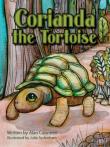 Image courtesy of publisher's website.1537000355820136040.jpg
Image courtesy of publisher's website.1537000355820136040.jpg Corianda the Tortoise Alan Cunneen , 2013 single work picture book
Corianda the Tortoise Alan Cunneen , 2013 single work picture bookAbstract: Corianda is a brave little tortoise. After a lucky escape from the poachers he calls on the help of the other bush animals to save his friends.
Illegal activity: Poaching
-
Abstract: The magical inhabitants of FernGully must venture outside the rainforest when some of the animal friends are taken by poachers.
Illegal activity: Poaching.
-
Abstract: When Zena and her friends try to find Tran, they end up in much deeper water than they expected... Beneath the sea there are dangerous secrets, and this summer at Portside holds more excitement than swimming, snorkelling and jet-ski riding.
Illegal activity: Abalone poaching.
-
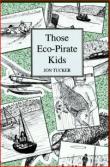 This image has been sourced from online.5774865365453708014.jpg
This image has been sourced from online.5774865365453708014.jpg Those Eco-Pirate Kids Jon Tucker , 2014 single work children's fiction
Those Eco-Pirate Kids Jon Tucker , 2014 single work children's fictionAbstract: Ten year old Fin has always been passionate about responsible fishing, so when he discovers an illegal net full of undersized fish in Sydney’s northern waterways, his first reaction is to set them free. The subsequent events turn a joint Kiwi-Australian family holiday into a rather more complex experience which reinforces the importance of sustainability, as well as demonstrating that modern technology is not always invincible in the face of nature’s power. (Source: Wildlife Society)
This book was shortlisted for the Environment Award for Children's Literature in 2015.
Illegal activity: Illegal fishing and poaching.
-
-
(Display Format : Landscape)
Negligence
Examples of negligence might include oil spills, littering, introducing species, or ignoring animals in distress.
N.B. Image above is from 'Finding Home', found online.
-
 This image has been sourced from online.7203691877226927337.jpg
This image has been sourced from online.7203691877226927337.jpg
 This image has been sourced from online.1673708322732309078.jpg
This image has been sourced from online.1673708322732309078.jpg
 This image has been sourced from online.3736726669003541016.jpg
This image has been sourced from online.3736726669003541016.jpg
 This image has been sourced from online.1289488495158983843.jpg
This image has been sourced from online.1289488495158983843.jpg
 This image has been sourced from online.3200351143268452140.jpg
This image has been sourced from online.3200351143268452140.jpg
 Image courtesy of publisher's website.2956958773489734922.jpg
Image courtesy of publisher's website.2956958773489734922.jpg Albatross Two Colin Thiele , 1974 single work children's fiction
Albatross Two Colin Thiele , 1974 single work children's fictionAbstract: The tiny South Australian coastal town of Ripple Bay is changed when Albatross Two, a giant offshore oil rig arrives. As her brother is employed on the rig, Tina Banks tries to understand the need for oil exploration, until an oil spillage threatens to destroy all the coastal wildlife.
-
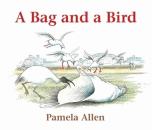 This image has been sourced from online.861496577193943384.jpg
This image has been sourced from online.861496577193943384.jpg
 This image has been sourced from online.6581304992655645117.jpg
This image has been sourced from online.6581304992655645117.jpg A Bag and a Bird Pamela Allen , 2017 single work picture book
A Bag and a Bird Pamela Allen , 2017 single work picture bookAbstract: This is a story of a plastic bag and a bird - a cautionary tale about taking care of our environment as well as being a wonderful showcase of some of the famous sights of Sydney. 'One day, a long time ago when I lived in Kirribilli, Sydney, I packed a lunch and set out to walk to the Botanic Gardens ...I crossed the harbour bridge then climbed down to Circular Quay. I walked beside the sea wall, past the Opera House until I reached the Botanic Gardens. And this is what I saw.'
A story about the dangers plastic bags, and how rubbish impact birds. An ibis is caught with a plastic bag around its neck after a boy's sandwich bag was taken by the wind.
-
Abstract: Zena wants to prove herself to her family and teacher by doing a brilliant science project on pollution. However she unwittingly pits herself against a chemical company when she investigates a strange liquid in the creek, which could lead to danger.
-
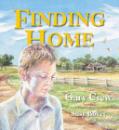 5552050882208048662.jpeg
5552050882208048662.jpeg
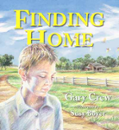 Image courtesy of publisher's website.729543429161883921.jpg
Image courtesy of publisher's website.729543429161883921.jpg Finding Home Gary Crew , 2009 single work picture book
Finding Home Gary Crew , 2009 single work picture bookAbstract: This picture book for older children is an ode and an obituary to the indigenous landscape, much of which was destroyed by white colonists. Ignorance and selfishness can destroy the things we love and value most - the child whose parents don't value his differences, the beauty of wild nature - and this story offers the reader a metaphor for the greater destruction of the environment through thoughtless acts.
-
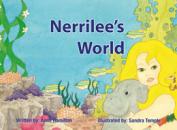 This image has been sourced from online.8536497308757121579.jpg
This image has been sourced from online.8536497308757121579.jpg Nerrilee's World Anne Hamilton , 2010 single work picture book
Nerrilee's World Anne Hamilton , 2010 single work picture bookAbstract: When oil spills into the bay, Nerrilee rushes to warn her friends of the danger. Illustrated by renowned wildlife artist Sandra Temple, this educational picture book features watercolors that depict a variety of Australian marine life. Anne Hamilton's read-a-loud text celebrates diversity and friendship in an engaging story of life under the sea.
-
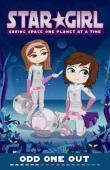 Cover image courtesy of publisher.23360334952302663.jpeg
Cover image courtesy of publisher.23360334952302663.jpeg
 This image has been sourced from Goodreads.com8114516913246239004.jpg
This image has been sourced from Goodreads.com8114516913246239004.jpg Odd One Out Louise Park , 2011 single work children's fiction
Odd One Out Louise Park , 2011 single work children's fictionAbstract: Planet Plantagan's air is being polluted and the vine aliens are suffering. When Space Cadets Star Girl and Comet XS are sent to investigate they get themselves into a tangle. Can they trust each other enough to save the planet and its vine aliens?
-
Abstract: The devastating effects of an oil spill are revealed by focusing on the plight of the little fairy penguins caught up in the disaster.
-
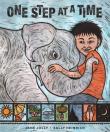 This image has been sourced from online.760005922392761987.jpg
This image has been sourced from online.760005922392761987.jpg One Step at a Time Jane Jolly , 2015 single work picture book
One Step at a Time Jane Jolly , 2015 single work picture bookAbstract: One Step at a Time is a story about a boy, a baby elephant and a landmine.
This book is about an elephant whose leg is permanently damaged by a neglected landmine, his rescue and rehabilitation in an Asian village.
-
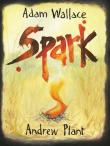 This image has been sourced from Booktopia1739011140880938917.jpg
This image has been sourced from Booktopia1739011140880938917.jpg Spark Adam Wallace , 2016 single work picture book
Spark Adam Wallace , 2016 single work picture bookAbstract: I began as a tiny spark in the dry grass.
All I wanted was a friend. I found one in the wind,
who helped me grow, who helped me fly!
In the end, though, was the wind really my friend?
Tells the story of a bushfire that began after a lit cigarette was thrown into the bush.
-
-
(Display Format : Landscape)
Pollution
Below are some examples of narratives that address the many forms of pollution that impacts the environment. Pollution is also often treated as simply part of the landscape in contemporary picture books; such books are not listed below but these instances can be found (and are mentioned) throughout the Exhibition.
N.B. Image above is from 'Seagull', found online.
-
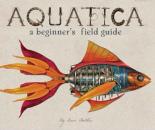 This image has been sourced from Booktopia6199353679273733893.jpg
This image has been sourced from Booktopia6199353679273733893.jpg Aquatica : A Beginner's Field Guide Lance Balchin , 2017 single work picture book
Aquatica : A Beginner's Field Guide Lance Balchin , 2017 single work picture bookAbstract: Welcome to future Earth. Our oceans have become polluted to such an extent that all marine life is now just a memory. Rising from the murky depths stirs new mechanical life, created by humans and now evolving outside any control. These new species have grown to threaten humanity as we know it. Welcome to the world of Aquatica.
As with its prequel, Mechanica, this picture book is a field guide / fictional history of the future. Aquatica is specifically about marine life that was lost due to over-pollution of the earth, and the mechanical creatures built to replace it.
-
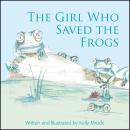 Image courtesy of publisher's website.4079815379567359897.jpg
Image courtesy of publisher's website.4079815379567359897.jpg The Girl Who Saved the Frogs Kelly Mrocki , 2014 single work picture book
The Girl Who Saved the Frogs Kelly Mrocki , 2014 single work picture bookAbstract: Freddie the frog and his family live in a beautiful frog-bog by the banks of a crystal clear lake. Slowly their waterways become polluted, and the family of frogs begin to get sick. Just when they think the pollution is there to stay, everything changes for the better when a little girl called Charlie comes along and helps to clean up the mess.
-
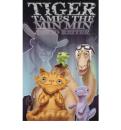 This image has been sourced from online.7541277696285373405.jpeg
This image has been sourced from online.7541277696285373405.jpeg The Greenhouse Effect David P. Reiter , 2004 single work children's fiction
The Greenhouse Effect David P. Reiter , 2004 single work children's fictionAbstract: When Tiger the Cat moves to Canberra with his owner Alexander, there are bound to be a few rough patches in settling in. The dogs next store are anything but friendly, and the nearby park is crawling with snakes and other creatures of the night. But Tiger makes friends with Wanda, the blue-tongued lizard and then finds himself wanting to become a Member of the Sacred Few, a group of magical frogs, actually extra-terrestrials in disguise. This crew has come to Earth on a mission to spread the word about the Great Danger, and the need to heal the planet of pollution and energy waste before it's too late. It's an adventure Tiger can't resist, filled with many surprises along the way. All he needs to do is be sure he won't miss out on his Cat Gourmet dinners along the way...
-
Abstract: Lester and Clyde are forced to leave their peaceful pond because of humans and their machinery and pollution.
This story follows two frogs trying to find a new home and the threats they encounter on the way.
"At daybreak everything was strange and new, the scene around an unnatural hue. Distant chimneys cast shadows on the land, 'Man's messed this up' Clyde waved his hand." (p. [12])
-
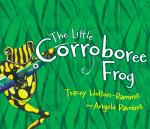 Image courtesy of Magabala BooksCorroboree Frog_large_FX7K.jpg
Image courtesy of Magabala BooksCorroboree Frog_large_FX7K.jpg The Little Corroboree Frog Tracey Holton-Ramirez , 2013 single work picture book
The Little Corroboree Frog Tracey Holton-Ramirez , 2013 single work picture bookAbstract: Jet the corroboree frog is happily taking care of the tadpole ponds when the water starts to dry up and his family's eggs are threatened. He goes to visit Grandmother Frog to find out why and she tells him all about the summers that are getting hotter every year and the careless humans who are leaving their rubbish around. When a boy and his father arrive to go fishing in the nearby river, Jet seizes the opportunity to show them how humans are threatening the very existence of his species.
-
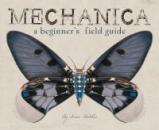 Image courtesy of publisher's website.7637345087935611760.jpg
Image courtesy of publisher's website.7637345087935611760.jpg Mechanica : A Beginner's Field Guide Lance Balchin , 2016 single work picture book
Mechanica : A Beginner's Field Guide Lance Balchin , 2016 single work picture bookAbstract: Welcome to future Earth. Despite repeated warnings, the environment has become polluted to such an extent that many areas of the globe have become uninhabitable, and wildlife is now extinct. From the ashes, a new style of ‘wildlife’ is created. Wildlife that will not remain harnessed by humankind. Welcome to the world of Mechanica.
This picture book is a field guide / fictional history of the future, in which natural birds and animals have died due to over-pollution of the earth.
-
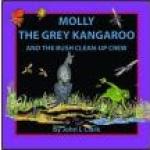 Image courtesy of Black Ink Pressmolly_FE[hash]P.jpg
Image courtesy of Black Ink Pressmolly_FE[hash]P.jpg Molly the Grey Kangaroo and the Bush Cleanup Crew John Lewis Clark , 2004 single work picture book
Molly the Grey Kangaroo and the Bush Cleanup Crew John Lewis Clark , 2004 single work picture bookAbstract: See the bush from a contemporary Indigenous viewpoint. John Clark approaches a serious problem with a sense of humour. Share the fun of a picnic with a Koori family and help children think about littering.
-
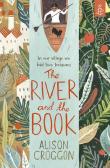 This image has been sourced from online.4414719186237757373.jpg
This image has been sourced from online.4414719186237757373.jpg The River and the Book Alison Croggon , 2015 single work novel
The River and the Book Alison Croggon , 2015 single work novelAbstract: Simbala is a Keeper, the latest in a long line of women who can read the Book to find answers to people's questions. When developers begin to poison the River on which Sambala's village relies, the Book predicts change. But this does not come in the form they expect; it is the sympathetic foreigner who comes to stay who inflicts the greatest damage of all.
Simbala travels upriver to the city on a journey to retrieve her village's valuable Book from a thief. This story is set in a village by a river that is slowly dying because of cotton farming and chemical pollution. Food shortages, poverty and trade are affected because of the slow destruction of the river.
Teacher's Notes are available here.
-
Abstract: Who is dumping toxic chemicals in the Tiger Beach creek? Ruby, Peter and Jake use biosensors, remote cameras and good old fashion detecting to find out.
-
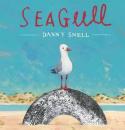 This image has been sourced from online.3120656257835682308.jpg
This image has been sourced from online.3120656257835682308.jpg Seagull Danny Snell , 2015 single work picture book
Seagull Danny Snell , 2015 single work picture bookAbstract: Seagull loves to fly. It makes her heart sing. But when she gets caught in a tangle of fishing line on the beach, Seagull can only watch as other birds fly effortlessly above. What can she do? Who will help her?
This picture book shows pollution of a beach; there is litter on each page, until a young boy rescues the seagull and seemingly cleans up the beach to make it a safer space for animals.
-
 This image has been sourced from online.3355779404696535080.jpg
This image has been sourced from online.3355779404696535080.jpg The Sknuks Colin Thiele , 1977 single work children's fiction
The Sknuks Colin Thiele , 1977 single work children's fictionAbstract: The greedy sknuks pollute their beautiful planet and face extinction because they are suspicious and refuse outside help.
-
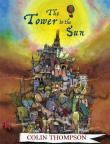 Image courtesy of publisher's website.5729909688511301202.jpg
Image courtesy of publisher's website.5729909688511301202.jpg The Tower to the Sun Colin Thompson , 1996 single work picture book
The Tower to the Sun Colin Thompson , 1996 single work picture bookAbstract: Despairing because the air has become so filthy that it blocks the sun's rays, the richest man in the world decides to use his money to build a tower so that his grandson can experience the sun as it once was.
-
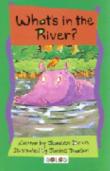 This image has been sourced from online.8226561353265783995.jpg
This image has been sourced from online.8226561353265783995.jpg What's in the River Janeen Brian , 2001 single work children's fiction
What's in the River Janeen Brian , 2001 single work children's fictionAbstract: Something strange is happening in the great, green river. The animals keep finding odd-looking things in the water. Where have they come from? And what should be done with them?
This story is about water pollution, due to humans littering in a jungle. The animals clean up the river and return the rubbish to the humans living round the river bend.
-
-
(Display Format : Landscape)
Threat of Introduced Species
Non-native animals and plants have been introduced to Australia since white settlers arrived. This has had a devastating effect on many species. The books below are examples of narratives that deal with the threat of introduced species in various ways.
N.B. Image above from 'Fox and Fine Feathers', found online.
-
Abstract: Adventure story about a boy and his father who is a scientist, who fly to Fiji to investigate a parasitic starfish on the reef. They unknowingly get caught up with a national mining syndicate which is deliberately seeding the reef with the parasitic starfish and trying to destroy environmental objections to their mining.
-
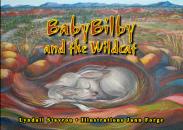 Image courtesy of publisher's website.2466623279607954300.jpg
Image courtesy of publisher's website.2466623279607954300.jpg Baby Bilby and the Wildcat Lyndall Stavrou , 2010 single work picture book
Baby Bilby and the Wildcat Lyndall Stavrou , 2010 single work picture bookAbstract: A lyrical narrative evocative of the Australian Outback. The story features an endangered animal, a feral cat and an Indigenous boy. The story is designed to engage, entertain and inform young children about environmental issues.
Includes bilby facts on the back cover.
-
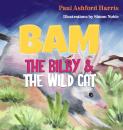 5195573687299909419.jpg
5195573687299909419.jpg Bam the Bilby and the Wild Cat Paul Ashford Harris , 2016 single work picture book
Bam the Bilby and the Wild Cat Paul Ashford Harris , 2016 single work picture bookAbstract: Bam was a small pink and white bilby. His real name was Bim Bam Bong but no one knew why so his friends just called him Bam. Early one morning, as Bam was snuffling around in the scrub looking for food, a wild cat jumped out from behind a tree stump and scared him. Find out how Bam and his animal friends defended their home from a new predator.
Australian animals work together to defeat the wild cat preying on them. A park ranger is featured. The endpapers contain factual information about the Greater Bilby and the non-extinct Lesser Bilby, provided by the Australian Wildlife Conservancy.
-
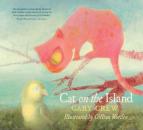 This image has been sourced from online.5063574131838584955.jpg
This image has been sourced from online.5063574131838584955.jpg
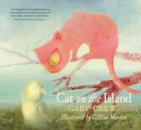 This image has been sourced from online.7419509342899743596.jpg
This image has been sourced from online.7419509342899743596.jpg Cat on the Island Gary Crew , 2008 single work picture book
Cat on the Island Gary Crew , 2008 single work picture bookAbstract: This is the true story of David and his father, who came to Stephens Island - a remote and pristine island off Cook Strait between the North and South Islands of New Zealand in 1894. There they built a lighthouse to protect ships entering the strait. Oblivious of the potential damage to the environment, they chopped down the trees and ferns where the local birds sheltered, thereby demolishing their habitat. But worse than that, they brought their pregnant cat with them. The tiny Stephens Island wrens, being flightless, had no natural defences against the predators and were wiped out in less than two years. The event is cited as the only instance where one species has been directly responsible for the extinction of another. Of course, once they realised what had happened, conservation authorities began the official eradication of the cats, but by then the damage had been done. The strikingly beautiful illustrations reinforce the tragedy of the obliteration of this tiny Eden, a timely metaphor for that other paradise known as Earth.
-
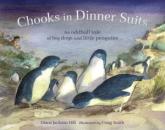 This image has been sourced from online.6507887994948381825.jpg
This image has been sourced from online.6507887994948381825.jpg Chooks in Dinner Suits : A Tale of Big Dogs and Little Penguins Diane Jackson Hill , 2015 single work picture book
Chooks in Dinner Suits : A Tale of Big Dogs and Little Penguins Diane Jackson Hill , 2015 single work picture bookAbstract: "Chooks in Dinner Suits is a warmly funny account of one man's quest to save a penguin colony, with two very unusual helpers.
On a tiny island lives a waddle of Little Penguins. But their numbers are dwindling. Swampy Marsh knows what to do, but no one will isten. Soon he can count the last few penguins on the fingers of one hand. The desperate townsfolk give Swampy, and his friends Max and Mimi, one chance. Will Swampy save the Little Penguins of Middle Island?" (Source: back cover)
Two Maremma dogs are trained to protect penguins from wild dogs and foxes that have been introduced to the island. The endpieces describe the history of penguins on Middle Island and the efforts made to preserve the species. See www.warrnamboolpenguins.com.au for more information.
-
Abstract: Lyrebird, Coucal, Pitta and Nightjar are groundbirds of the Australian forest floor. Although as different from each other as it is possible to be, they always watch out for danger and warn each other to hide.
-
 Screen cap from opening creditsgumnutzimage_C[hash]o[Z.jpg
Screen cap from opening creditsgumnutzimage_C[hash]o[Z.jpg Gumnutz : A Juicy Tale Phil Sanders , 2007 single work film/TV
Gumnutz : A Juicy Tale Phil Sanders , 2007 single work film/TVAbstract: The hero of GUMNUTZ is Claude, a neurotic numbat who is forced to save his uncle's juice factory from the clutches of the villainous Hot Shot Charlie, a crafty fox. Claude has help from his feisty friend Peppa, a fellow numbat and through their adventures they learn the importance of friendship, family and responsibility.
-
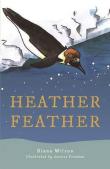 3265166588943870665.jpg
3265166588943870665.jpg Heather Feather Diana Wilson , 2016 single work children's fiction information book
Heather Feather Diana Wilson , 2016 single work children's fiction information bookAbstract: Heather Feather is a baby emperor penguin from Antarctica. She sets off in this environmentally-concerned information story, all the way around Australia. Join her and learn about the coastal cities and animals she sees, as well as the degradation of her habitat, and pollution, that really gets her goat.
Heather Feather has many dangerous encounters with introduced species, such as foxes, and learns of the devastation introduced species have had on native Australian mammals and marine life.
Each chapter contains a 'Did you know?' chapter summary listing facts about the place Heather Feather has just visited, including historical and species information.
-
Abstract: A quoll is visited by the spirit of the thylacine, who helps her and her babies to find a new home after cane toads move into her habitat.
-
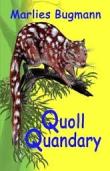 This image has been sourced from online3111082166878835685.jpg
This image has been sourced from online3111082166878835685.jpg Quoll Quandary Marlies Bugmann , 2004 single work children's fiction
Quoll Quandary Marlies Bugmann , 2004 single work children's fictionAbstract: Ben and Samantha's adventure brings the children face-to-face with one of Tasmania's unique and rare inhabitants, the spotted-tailed quoll, an endangered, pretty animal that faces an uncertain future due to the threat of a predator not native to the country, the fox.
-
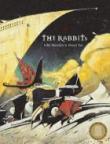 Image courtesy of publisher's website.7883706960148354453.jpg
Image courtesy of publisher's website.7883706960148354453.jpg The Rabbits John Marsden , 1998 single work picture book
The Rabbits John Marsden , 1998 single work picture bookAbstract: An allegorical story using rabbits, an introduced species, to represent the arrival of Europeans in Australia and the subsequent widespread environmental destruction.
-
First line: In the parklands
Mentions endangered and extinct animals: Eastern Quoll, Tamar Wallaby, Southern Brown Bandicoot, Bilby, Short-Beaked Echidna, Platypus, Burrowing and Brush-Tailed Bettong.
Quote from poem -
"Foxes, cats, rats, and dogs
Replace the retreating."
-
-
(Display Format : Landscape)
Case Study: Bushfires
Bushfires is a common theme in Australian works, and many texts deal with the fallout of natural and man-made bushfires on ecosystems and animals. See here for works about bushfires in children's and young adult literature. Try also a keyword search for 'bush fire'.
N.B. Image above from 'Bilby and the Bushfire', found online.
-
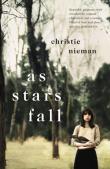 Cover image courtesy of publisher.3255724879015364193.jpg
Cover image courtesy of publisher.3255724879015364193.jpg As Stars Fall Christie Nieman , 2014 single work novel
As Stars Fall Christie Nieman , 2014 single work novelAbstract: "The fire was fast and hot ... only days after it went through, there were absolutely no birds left. I should have seen it as an omen, the birds all leaving like that." Robin is a self-confessed bird-nerd from the country, living in the city. On the first day at her new school, she meets Delia. Delia is freaky and definitely not good for Robin's image. Seth, Delia's brother, has given up school to prowl the city streets. He is angry at everything, especially the fire that killed his mother. When a rare and endangered bird turns up in the city parklands, the lives of Robin, Seth and Delia become fatefully and dangerously intertwined... An intricate love story about nature, grief, friendship and life. Beautiful, poignant, with wonderfully original characters and a unique blend of time and place.
This novel is about a bush fire, and its aftermath. It links a Bush-Stone curlew and three teenagers experiencing loss, love and change.
-
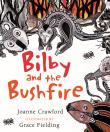 This image has been sourced from Anita Heiss 2014.7490233432172048158.png
This image has been sourced from Anita Heiss 2014.7490233432172048158.png Bilby and the Bushfire Joanne Crawford , 2007 single work picture book
Bilby and the Bushfire Joanne Crawford , 2007 single work picture bookAbstract: When a storm sparks a raging bushfire, Bilby and his friends are forced to leave their homes to escape the danger. Each animal uses its own natural defenses against the fire. But what will Bilby do? He's never been in a bushfire before! Bilby and the Bushfire, which provides a harmonious balance of educational and entertainment value, is beautifully illustrated in contemporary Aboriginal style by Grace Fielding.
-
Abstract: Bush fires cause animals to be frightened and confused. For many there is nowhere to run. Four young survivors join together in search for families, food and water. Who will help them, are they alone?
The Bushfire Babies follows the story of four young animals who have lost their mothers during a bush fire. The bush fire was caused by humans, and a firefighter helps relocate the animals after their natural habitat is devastated.
-
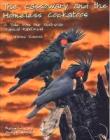 7897577478776923156.jpg
7897577478776923156.jpg The Cassowary and the Homeless Cockatoos : A Tale from the Australian Tropical Rainforest Christina Zdenek , 2012 single work picture book
The Cassowary and the Homeless Cockatoos : A Tale from the Australian Tropical Rainforest Christina Zdenek , 2012 single work picture bookAbstract: Konrad and Sheila are a pair of Palm Cockatoos, desperate to raise a family. However, their plans are shattered when a huge bushfire rages out of control and burns their nesting tree to the ground. Whilst hiding out in the rainforest they meet a kindly cassowary named Pip. She proposes a magical solution to transform their lives. Will her extraordinary plan work in time for them to rear a chick before the rainy season starts?
The endpapers contain facts about the rainforest wildlife and how they contribute to the survival of the rainforest. It is unclear if the bushfire results from humans.
-
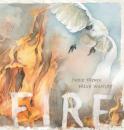 Cover image courtesy of publisher.1726336341410713520.jpg
Cover image courtesy of publisher.1726336341410713520.jpg Fire Jackie French , 2013 single work picture book
Fire Jackie French , 2013 single work picture bookAbstract:
'One small spark brought fire awake
'Winding like a small black snake
'Fire flickered, fire crept
'Flames snickered, bushfire leapt...
Inspired by the bushfires that have affected many Australians, Fire is a moving and sensitive story of a natural disaster as seen through the eyes of a cockatoo. The fire mercilessly engulfs homes and land, leaving a devastating path of destruction. But from the ruins, courage, kindness and new life grows. A beautiful and timely expression of the strength of the Australian spirit during times of adversity. '
-
First like: Gremlin-like it came
Themes: deliberately-lit bushfire, danger, devastation, guilt
-
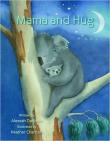 This image has been sourced from online.1192383868660184358.jpg
This image has been sourced from online.1192383868660184358.jpg Mama and Hug Aleesah Darlison , 2016 single work picture book
Mama and Hug Aleesah Darlison , 2016 single work picture bookAbstract: When Hug first climbs out of his mother's pouch it is spring, deep in the Australian Bush. The trees are in blossom and new green growth is everywhere. As Hug grows, the season changes to the sharp dry crackle of summer. One day danger comes to the bush and Mama must flee to protect her baby, Hug.
The story highlights the importance of caring for injured wildlife, as well as the displacement of animals and the devastation caused by bushfires
-
 This image has been sourced from Booktopia1739011140880938917.jpg
This image has been sourced from Booktopia1739011140880938917.jpg Spark Adam Wallace , 2016 single work picture book
Spark Adam Wallace , 2016 single work picture bookAbstract: I began as a tiny spark in the dry grass.
All I wanted was a friend. I found one in the wind,
who helped me grow, who helped me fly!
In the end, though, was the wind really my friend?
Tells the story of a bushfire that began after a lit cigarette was thrown into the bush.
-
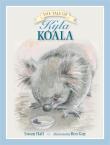 This image has been sourced from online.503030211813007360.jpg
This image has been sourced from online.503030211813007360.jpg The Tale of Kyla Koala Susan Hall , 2011 single work picture book
The Tale of Kyla Koala Susan Hall , 2011 single work picture bookAbstract: This book tells the story of Kyla Koala, who is experiencing her first bush fire. All her animal friends can run away, but she can't move fast enough. Will the flames catch up with her? She finally reaches a small homestead where human 'Uprights' have beaten back the fire. A little girl takes care of her, yet she doesn't understand koalas or know what they eat. The girl wants to keep her as a pet, but Kyla has other ideas. But when she finally gets back home, things are not what she expected. What will she do now?
This book is part of the Animal Tales series by Susan Hall and Ben Guy. The series is similar to the Beatrix Potter books in style, shape and narrative. They tell of Australian animals' first encounters with Europeans in the 18th century.
The text and illustrations powerfully show the effects of the bush fire on wildlife in The Tale of Kyla Koala, clearly demonstrating the fear and pain that the koala is in.
-
-
(Display Format : Landscape)
Case Study: Marine Environments
Threats to marine environments are sometimes conscious, and often negligent. Threats include fishing and tourist vessels; netting and entanglement; and water pollution. Such threats are so pervasive in the real world that they are often simply included in picture books set underwater and in oceans - it is part of the landscape.
N.B. Image above is from Sign of the Seahorse, found online.
-
 7200732213170393170.jpg
7200732213170393170.jpg At the Beach : Postcards from Crabby Spit Roland Harvey , 2004 single work picture book
At the Beach : Postcards from Crabby Spit Roland Harvey , 2004 single work picture bookAbstract: A richly detailed book about Australian beach holiday, guaranteed to occupy children for hours, looking for objects that have been lost (by the artist) and found (by the family dog). Humorous postcards on each spread convey the joy of summer holidays.
A humorous text, though the illustrations subtly show some devastating affects to marine environments, not least of all, pollution.
See also the marine-scapes in Roland Harvey's other books In the City : Our Scrapbook of Souvenirs, To the Top End : Our Trip across Australia, and All the Way to W.A. : Our Search for Uncle Kev.
-
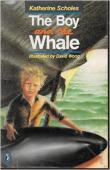 576312032542733076.jpg
576312032542733076.jpg The Boy and the Whale Katherine Scholes , 1985 single work children's fiction
The Boy and the Whale Katherine Scholes , 1985 single work children's fictionAbstract: Sam walked along the top of the sand-hill, looking out over the rocks and sea. Then he paused, suddenly still, and stared down at the beach below.
A dark mound marked the white sand at the water's edge. He squinted. A heap of net... some ship's cargo washed in... an upturned boat?
This is the story of a boy and a whale.
-
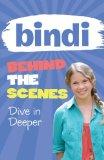 8986481345560815710.jpg
8986481345560815710.jpg Dive in Deeper Bindi Irwin , Meredith Costain , 2012 single work children's fiction
Dive in Deeper Bindi Irwin , Meredith Costain , 2012 single work children's fictionAbstract: The Irwin clan are taking time out to holiday with friends on Lady Elliot Island just off the Queensland coast. As a regular guest of the island, Bindi can't wait to show her friends around! And with the turtle nesting season in full swing, there is plenty to do and see. But when Bindi joins her friends on their first scuba dive, she spots a young turtle in trouble. Will they be able to save it in time?
Bindi also learns a lot about sustainability on an island which focuses on reducing its carbon footprint through efficient energy use and waste management.
-
Abstract: Little Dolphin celebrates the level of intelligence and compassion that scientists are only now realising Dolphins possess, and explores the life of a young dolphin as it approaches adulthood.Follow little dolphin from her difficult birth to her escape through the shark net that traps her mother. She is adopted by a pod that teach her the clicks and whistles of the dolphin language. They also teach her how to use tools (sea sponges) as few other creatures, apart from humans, can do. But when the time comes for her to leave the bay, the little dolphin finds she must use all her skills to help another dolphin that is drowning. Little Dolphin explores the new-found knowledge we have of these ancient sea mammals. Scientists believe that the system of clicks and whistles dolphins use is a language almost as extensive as our own. ‘Inshore’ Bottlenose Dolphins face a bleak future from tuna nets (tuna is a major source of food for them), boat propellers and pollution; the latter causing health problems and possibly birth defects, effecting their size.
-
 This image has been sourced from online.8134117888798071165.jpg
This image has been sourced from online.8134117888798071165.jpg
 This image has been sourced from online.4993051761753921270.jpg
This image has been sourced from online.4993051761753921270.jpg
 This image has been sourced from online.1791832886464030288.png
This image has been sourced from online.1791832886464030288.png
 This image has been sourced from online.7597712006552547019.jpg
This image has been sourced from online.7597712006552547019.jpg
 Image courtesy of publisher's website.5323829056489362007.jpg
Image courtesy of publisher's website.5323829056489362007.jpg
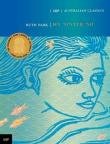 Cover image courtesy of publisher.7377974561448320611.jpg
Cover image courtesy of publisher.7377974561448320611.jpg My Sister Sif Ruth Park , 1986 single work novel
My Sister Sif Ruth Park , 1986 single work novelAbstract: Fourteen-year-old Riko manages to get her delicate older sister Sif and herself to their remote Pacific island home, where an American scientist who falls in love with Sif and discovers her connection with an underwater race creates complications in Riko's life.
This fantasy narrative is driven by the devastating effects of humans upon oceans and marine life, such as oil spills, global warming, nuclear testing and mining.
-
 This image has been sourced from online.3120656257835682308.jpg
This image has been sourced from online.3120656257835682308.jpg Seagull Danny Snell , 2015 single work picture book
Seagull Danny Snell , 2015 single work picture bookAbstract: Seagull loves to fly. It makes her heart sing. But when she gets caught in a tangle of fishing line on the beach, Seagull can only watch as other birds fly effortlessly above. What can she do? Who will help her?
This picture book shows pollution of a beach; there is litter on each page, until a young boy rescues the seagull and seemingly cleans up the beach to make it a safer space for animals.
-
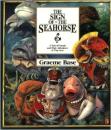 541520806388471359.jpg
541520806388471359.jpg The Sign of the Seahorse : A Tale of Greed and High Adventure in Two Acts Graeme Base , 1992 single work picture book
The Sign of the Seahorse : A Tale of Greed and High Adventure in Two Acts Graeme Base , 1992 single work picture bookAbstract: A rhyming tale of fishy underwater gang warfare, pollution from toxic waste, and true love.
-
-
(Display Format : Landscape)
Case Study: Wombats
Wombats have suffered at the hands of humans in many ways. Below are a few examples of stories about wombats effected by farming, loss of habitat and destruction. Try also searching 'wombats'.
N.B. Image above is from 'The Tale of Wil Wombat', found online.
-
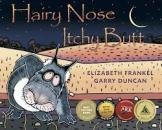 This image has been sourced from online.7743125517346011974.jpg
This image has been sourced from online.7743125517346011974.jpg Hairy Nose, Itchy Butt Elizabeth Frankel , 2011 single work picture book
Hairy Nose, Itchy Butt Elizabeth Frankel , 2011 single work picture bookAbstract: Ever had an itch you couldn't scratch? Hairy-Nosed Wombat has one, and somebody has chopped down his favourite scratching tree!
-
Abstract: Harry is very happy in his burrow in the desert until the men come with machinery to make a new road and his habitat is threatened.
-
 This image has been sourced from Goodreads.1325585048376707673.jpg
This image has been sourced from Goodreads.1325585048376707673.jpg
 4782299268881930407.jpg
4782299268881930407.jpg Golden Wombats Jill Morris , 1990 single work picture book
Golden Wombats Jill Morris , 1990 single work picture bookAbstract: A story about a special family of wombats found on on Flinders Island in Bass Strait.
A mother wombat is shot and killed, leaving a joey to fend for itself.
This text is a kind of narrative non-fiction, a mix of genres that allow the author to convey narrative, horror, sadness and factual information. The narrative concludes and is followed by a poem titled 'Who Shot the Wombat?' Following this are brief 'reports' by Jill Morris, a history of the Bass Strait Wombats, a 'blueprint' for a wombat (biological images and facts), and an interview with a child wildlife carer who looks after wombats on Flinders Island.
-
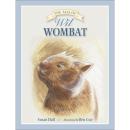 Image courtesy of publisher's website.8550431587284037891.jpg
Image courtesy of publisher's website.8550431587284037891.jpg The Tale of Wil Wombat Susan Hall , 2011 single work picture book
The Tale of Wil Wombat Susan Hall , 2011 single work picture bookAbstract: This book tells the story of Wil Wombat, who thinks that he knows best. When he comes across a camp of Uprights, he is sure that these men will be friendly. Soon he wishes he had listened to his wise old Ma! He is easily captured by the settlers, who think he might make a tasty meal. Luckily, the men don't understand wombats and don't realise that all wombats, even small ones like Wil, have a talent for digging. Can Wil escape before the men find out?
-
Abstract: Big Foot the hairy-nosed wombat faces a dangerous predator, while people are quietly rallying around to save his species. Based on real-life events in a small national park in Queensland. Includes factual information about wombats.
-
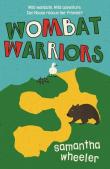 This image has been sourced from Booktopia8736148614638967813.jpg
This image has been sourced from Booktopia8736148614638967813.jpg Wombat Warriors Samantha Wheeler , 2017 single work children's fiction
Wombat Warriors Samantha Wheeler , 2017 single work children's fictionAbstract: Mouse by name, mouse by nature. Mouse is not prepared for her last-minute stay at Aunt Evie’s. How will she cope at a new school without her parents around? But before Mouse has even unpacked her suitcase, she makes a new friend – a wombat called Miss Pearl! Suddenly, being in a strange cottage doesn’t seem so bad, especially when she can snuggle up with a wombat. Mouse soon learns that not everyone in the area loves wombats, including Aunt Evie’s landlord, a sheep farmer who destroys them on sight. Can Mouse find her voice in time to keep her furry friends safe?
Wombat Warriors is about the impact of farming, and the methods of farmerss to prevent wombats from impacting farm life. A number of wombats are rescued and cared for by Mouse and her family. The back of the book contains a 'Wombatology' - dot points about wombats, their habitats, threats to the species, and caring for them, specifically the southern hairy-nosed wombat.
-
-
You might be interested in...

- An Overview
- A Brief History Part I: Settlement to Post-War (Forthcoming) In Progress
- A Brief History Part II: 1970s to Present Day (Under Development) In Progress
- Aboriginal Stories and the Environment
- Landscapes and Settings
- Biodiversity and Threatened Species
- Caring for the Environment
- Sustainability
- Built Environments
- Environmental Degradation
- Disasters, Climate Change and Global Warming
- Poetry, Film and Other Narrative Forms
- Education and the Australian Curriculum
- Authors, Illustrators and Publishers
- Award-winning Environmental Literature
- Bibliography
- Project Team and Acknowledgments

- An Overview
- A Brief History Part I: Settlement to Post-War (Forthcoming) In Progress
- A Brief History Part II: 1970s to Present Day (Under Development) In Progress
- Aboriginal Stories and the Environment
- Landscapes and Settings
- Biodiversity and Threatened Species
- Caring for the Environment
- Sustainability
- Built Environments
- Environmental Degradation
- Disasters, Climate Change and Global Warming
- Poetry, Film and Other Narrative Forms
- Education and the Australian Curriculum
- Authors, Illustrators and Publishers
- Award-winning Environmental Literature
- Bibliography
- Project Team and Acknowledgments

